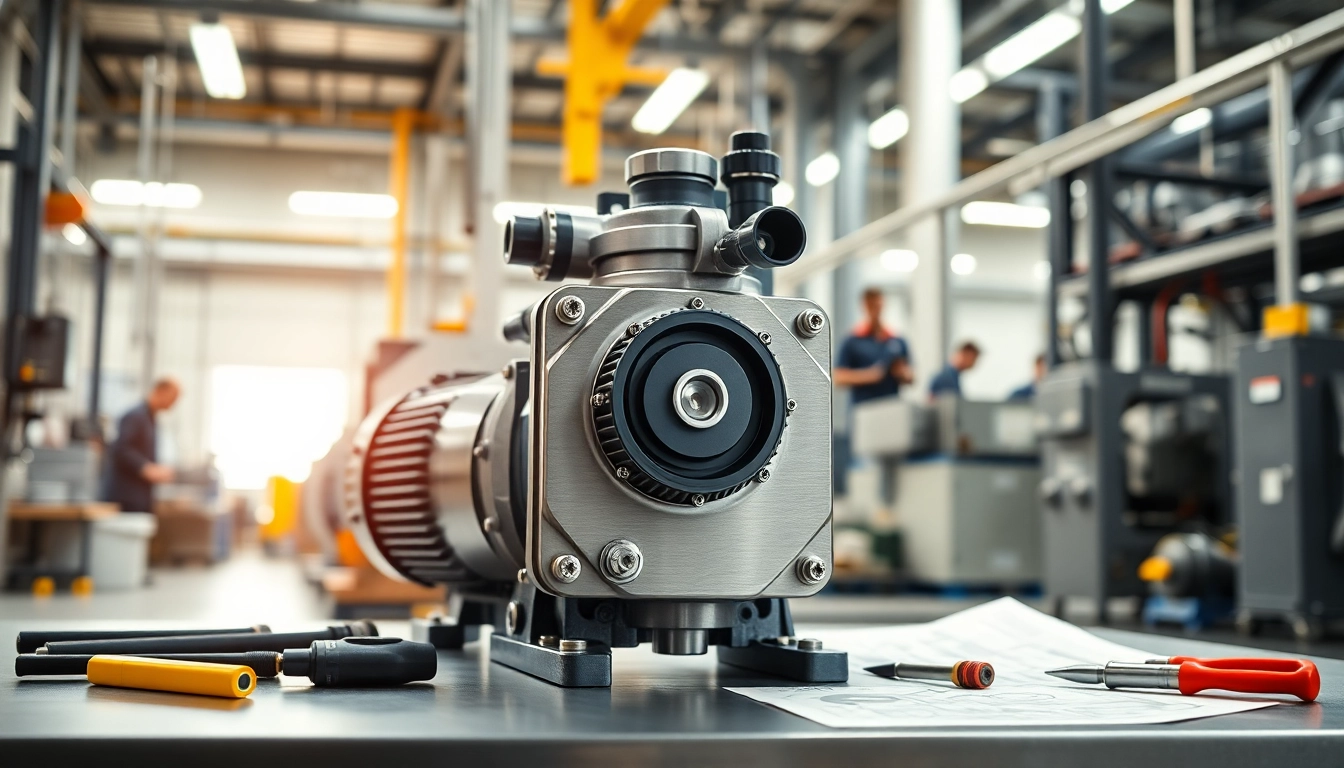Understanding Blow Molding Technology
What is Blow Molding?
Blow molding is a manufacturing process used to produce hollow plastic parts. The technique involves the formation of a heated plastic parison, which is then inflated within a mold to take on its desired shape. This process is essential in creating items such as bottles, containers, and various products across numerous industries. Whether for packaging, automotive components, or consumer products, blow molding offers the versatility needed for large-scale production with consistency and efficiency.
The Various Types of Blow Molding Processes
There are three primary types of blow molding processes: extrusion blow molding, injection blow molding, and stretch blow molding. Each type has specific advantages and applications:
- Extrusion Blow Molding: In this process, molten plastic is extruded into a parison, which is then formed into shape inside a mold by air pressure. This method is ideal for making large, hollow parts and is commonly used for producing bottles and containers.
- Injection Blow Molding: This technique combines injection molding and blow molding. A preform is first created using injection molding, then placed in a blow mold where air is injected. This method allows for high precision and is excellent for small parts, such as medical components.
- Stretch Blow Molding: Stretch blow molding enhances the mechanical properties and clarity of a final product, such as PET bottles. This process stretches the preform both axially and radially to create a stronger end product, often used in the beverage industry.
Applications of Blow Molding in Industry
Blow molding serves numerous industries due to its capability to create lightweight yet durable products. Some key applications include:
- Packaging: Most common in the beverage industry, blow-molded containers are ideal for soft drinks, water, and other liquids.
- Automobile Parts: Components such as fuel tanks, air ducts, and bumpers often utilize blow-molding techniques for their lightweight nature.
- Consumer Goods: From toys to household storage products, blow molding provides an efficient way to produce various consumer items.
- Industrial Applications: Large parts such as chemical tanks and containers require robust manufacturing, making blow molding a suitable choice.
Choosing the Right Blow Molding Machine Supplier
Key Factors to Consider When Selecting a Supplier
Choosing the right blow molding machine supplier is pivotal for operational success. Key factors to consider include:
- Technical Expertise: Look for suppliers who have extensive knowledge of blow molding processes and can offer tailored solutions to meet your needs.
- Quality Assurance: Evaluate the quality of the machines they provide. Quality control measures and certifications can indicate a supplier’s reliability.
- Support Services: Consider the level of support you will receive, including installation, training, and maintenance. A strong support system is crucial for minimizing downtime.
- Cost and Value: While cost is an essential factor, the value provided is equally important. A cheaper machine might not offer the same benefits or lifespan as a more expensive alternative.
Comparing Suppliers: Quality, Price, and Support
It’s essential to conduct thorough comparisons among potential blow molding machine suppliers. Focus not only on the price but also on:
- Performance Metrics: Review performance specifications and efficiency ratings to ensure you choose a supplier whose machines can meet production demands.
- Reviews and Reputation: Investigate customer feedback and testimonials to gauge the supplier’s reliability and product quality.
- After-sales Support: Good support can drastically improve machine longevity and efficiency. Make sure that the supplier offers comprehensive after-sales assistance.
Industry Reviews and Recommendations
Reliable sources such as industry publications and online forums can provide invaluable insights into the best blow molding machine suppliers. Seek recommendations from industry peers and investigate firms that have a proven track record. Consider suppliers like Blow Molding Machine Supplier and their competitors, like Uniloy and Parker, noted for their robust offers and technological advancements.
Top Benefits of Working with a Blow Molding Machine Supplier
Cost-Effectiveness and Efficiency
Investing in blow molding technology can yield significant cost savings in production. By partnering with an effective supplier, businesses benefit from:
- Reduced Resource Waste: Advanced blow molding machines are designed to minimize material waste and improve yield.
- Increased Production Speed: Modern machines often operate at higher speeds, increasing overall efficiency without compromising quality.
- Lower Labor Costs: Automating parts of the process can reduce labor dependency and costs significantly.
Customization Options for Unique Needs
Every business has unique requirements for their blow-molded products. Partnering with a specialized supplier can provide access to:
- Tailored Designs: Suppliers can often offer machines that accommodate customized designs and shapes to fit specific product needs.
- Flexible Production Capabilities: The ability to switch between different product types without extensive downtime optimizes workflow and product offerings.
- Material Compatibility: Expert suppliers can recommend materials that enhance your product characteristics, whether strength, flexibility, or clarity.
Access to Advanced Technologies and Innovations
Supplier partnerships provide access to cutting-edge technologies, such as:
- Enhanced Automation: Many suppliers offer automated machinery that reduces human intervention and speeds up production rates.
- Data-Driven Insights: Some advanced machines come equipped with data collection features, enabling companies to analyze performance and improve efficiency.
- Environmentally Friendly Solutions: Suppliers actively innovate to produce machines that consume less energy and use recyclable materials, aligning with global sustainability efforts.
Common Challenges in Blow Molding and Solutions
Addressing Production Limitations
Challenges in the blow molding process can arise, such as:
- Machine Downtime: Regular maintenance and quality control checks can help prevent unexpected breakdowns. Investing in a reliable supplier ensures access to parts and support when needed.
- Quality Inconsistencies: Implementing strict quality control measures and using advanced technology can help maintain product standards throughout production runs.
Quality Control Measures
Effective quality control strategies involve:
- Regular Inspections: Performing consistent checks throughout production helps identify issues early, reducing overall waste.
- Standard Operating Procedures (SOPs): Establishing clear SOPs ensures every operator knows their responsibilities, minimizing variances caused by human error.
Maintenance and Service Requirements
All machinery requires upkeep to operate effectively. Address these needs by:
- Creating a Maintenance Schedule: Regularly scheduled maintenance can prevent bigger breakdowns and extend machine lifespan.
- Training Staff: Ensuring team members understand how to properly operate and maintain machines can drastically improve efficiency and reduce wear.
Future Trends in Blow Molding Technology
Environmental Sustainability in Manufacturing
The emphasis on environmental sustainability is shaping the future of blow molding technology. Some notable trends include:
- Increased Use of Alternative Materials: The industry is steadily moving towards using bio-based and recycled materials in manufacturing processes.
- Energy-Efficient Technologies: Suppliers are innovating to create blow molding machines that consume less energy, thus lowering greenhouse gas emissions.
Automation and Smart Manufacturing Technologies
Automation plays a pivotal role in the future of blow molding. Key advancements include:
- Smart Sensors: The integration of IoT devices allows manufacturers to monitor machine performance in real-time, proactively addressing issues.
- AI and Machine Learning: Advanced analytics can optimize production processes and predict maintenance needs.
The Future of Blow Molded Products in the Market
As innovations progress, the demand for blow-molded products will likely increase, particularly in areas such as packaging and eco-friendly solutions. With evolving consumer preferences for sustainable packaging, suppliers who can adapt and innovate will significantly benefit from market growth.















Leave a Reply